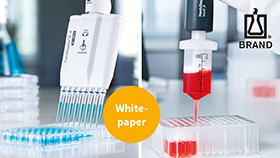Now Bring me that Horizon
Career strategies for young European scientists
by Ralf Schreck, Labtimes 05/2014
Page 1 | Page 2 | Page 3
Going Europe
European Fellowships come in three flavours: Standard, Career Restart and Reintegration. Standard fellowships are evaluated by one out of the eight main scientific panels as, for example, Life Sciences or Chemistry, whereas the latter two are each evaluated by a single multidisciplinary panel. All three fellowships have in common that the host institution has to be located in an EU Member or Associate Country and that the funding period is between 12 and 24 months.
For Career Restart and Reintegration the mobility rule has been modified. Only researchers that have not lived or worked for more than three years in the potential host country immediately prior to the proposal submission deadline are eligible. In addition, the prerequisite to apply for the Reintegration grant is that the scientist was out of work for at least one year immediately prior to the proposal submission deadline. Applicants are strongly encouraged to integrate a secondment to another type of institution not identical to their host into their fellowship. The secondment may be split into several visits and may last up to three months for fellowships up to 18 months, and up to six months for fellowships above 18 months.
If the MSC Reintegration Fellow enjoys his stay at his outgoing host institution and wants to continue his research career there beyond the funding period, he still has to return. Otherwise, he has to refund his grant to the Research Executive Agency. According to the Guide for Applicants, the host institution has to retransfer the total amount of the EU contribution, if the return phase is not fulfilled. In case the Marie Skłodowska-Curie Fellow is solely responsible for the non-return “the host institution has to take all appropriate measures including legal action to recover from the researcher the total amount received for his/her benefit under the Grant Agreement”.
The taxpayer is footing your bill
What type of financial support can you expect as a MSC Fellow? All money goes to your host institution, which signs the Grant Agreement and provides you with an employment contract. As far as international fellowships or training networks are considered, two types of costs are covered: researcher unit costs and institutional unit costs. Researcher unit costs are covered by three monthly allowances: a living allowance, which needs to be adjusted by a country-specific cost of living coefficient ranging from 0.47 for a stay in Zimbabwe to 1.51 for a visit to Bermuda; a mobility allowance and, if applicable, a family allowance. Researcher unit costs are subjected to deductions, e.g. taxes and social security contributions according to the national regulations of the host country. Host institutions are allowed to enhance the researcher’s salary by own resources. Institutional unit costs include research, training and network costs as well as management and overhead costs.
Your gross annual earnings as a PhD student or a postdoc in a country like, for example, Luxembourg with a living correction factor of 1.00 are €44,500 and €63,000, respectively. If applicable, you receive on top the family allowance of €6,000 per year. Please note that your marital status as indicated in the Grant Agreement is relevant for obtaining the family allowance. If you marry during your fellowship, you will not receive the family allowance. The overall EU contribution for hosting a PhD student or a postdoc is €80,500 and €85,800 per year, respectively, since the annual institutional unit costs vary between €36,000 for PhD students and €22,800 for postdocs.
Training networks may be funded for up to a four-year period with a maximum of 540 person months, which means, for example, support for 15 PhD students over a three-year period or for 180 PhD students over a three-month period. With a correction factor of one this adds up to about €3.6 million for the ITN. COFUND beneficiaries must ensure matching funds and for a three to five-year period will receive up to €10 million. This provides half of the researcher and institutional costs for PhD students or postdocs and has to be spent for at least a three-month period.
Help needed?
If you plan to apply, it is quite helpful to ask colleagues for proposals. You should preferentially try to get successful applications from the same Framework Programme because those have already been optimised to meet all current criteria for funding. In the Participant Portal you may search for the MSCA call of your interest and download all necessary documents associated with it, including the specific Horizon 2020 programme, the two-year Work Programme, the Guide for Applicants, the Guide to Submission and Evaluation or the FAQs. There you also gain access to the Participant Portal Submission Service, which is used for the online submission of your proposal.
In addition, the European Commission has also set up a special website for Marie Skłodowska-Curie Actions. In the Participant Portal you may also find the National Contact Point in charge of MSCA in your country, as, for example, the Alexander von Humboldt Foundation in Germany, the UK Research Office (UKRO) in the United Kingdom or the Agency for the Promotion of European Research (APRE) in Italy. They may offer webinars or even events at your local institution, where they introduce, in great detail, MSCA and answer all your questions. Moreover, they may also give you advice on all stages of your application and even countercheck and optimise your proposal based on their extensive experience. You may receive additional help from the international office of your present or future host institution and, of course, from your future supervisor.
Proposals have an online A part with administrative details and a B part, which includes your ten-page research proposal and has to be uploaded in the portable document format, PDF. You may download an example file to become familiar with all parts of the application before starting the actual submission process.
The A part has five sections. The General Information (A1) should contain a catchy title and an acronym for your proposal. By choosing a so-called discipline descriptor you decide on your evaluation panel. The keywords you provide are used to select suitable experts for the evaluation of your proposal. In the A2 form, the administrative details of your host institution, your supervisor and yourself, including your whereabouts during the last five years are queried. In the A3 form, your budget is calculated based on the number of months of your fellowship and family status. Ethics topics are covered in the A4 form. Here, you are asked, for example, whether stem cells or animals are part of your research, whether your results may be used also for military purposes, whether you collect or use personal data and so on. Each “YES” leads to more paperwork and with high probability to a stringent ethics review. An additional security scrutiny will be applied and leads to more red tape, if your proposal deals with information that is ‘EU-classified’. You may be asked to turn in a security aspect letter, a security classification guide and a copy of the facility security clearances.
The art of writing
Before writing the B part, be aware that the great majority of proposals written by your competitors will be above the quality threshold level for funding, meaning they will reach at least 70% of the maximum total score. In order to prevail, you have to fight for every decimal point. You will lose, if you think that conceiving a stunning research project and choosing as host a Nobel laureate are sufficient to outscore the rest. Do not expect the evaluators to rubber-stamp a flawed proposal just because they like your ideas – they have become slaves to their evaluation sheets and must follow the strict guidelines themselves. So, take a look at the evaluation sheet, which is made available as a self-evaluation form to all applicants.
The core of the B part is a ten-pager with a short summary, followed by three sections arranged in the order and priority of the main evaluation criteria, which are excellence, impact and implementation. They are weighted 50%, 20% and 30%, respectively. This means that half of all points are earmarked for the excellence criterion and that if, for example, two proposals are on a par concerning excellence, the proposal with a higher score in the following sections wins. Altogether, there are ten subsections and you have to make sure that each subsection is adequately and perfectly drafted. Use the experience and knowledge of your future supervisor. He or she is also the one to finally push the send button for your proposal on behalf of the institution.
It is certainly advisable to keep in mind a few simple rules. Applications are done in English only, though it is allowed to submit proposals in any official EU language. The requirements with respect to format, page limits and font are not negotiable; otherwise your proposal will not make it to the experts for evaluation. Excess pages, for example, will be overprinted with a note urging the evaluator to disregard them. Also, follow the structure of the template proposal, which helps the expert to find the things he is looking for. Provide an easily readable document (short paragraphs, emboldened keywords, lists, summary diagrams) and ask a native speaker, who is preferentially not a linguist but familiar with scientific writing to have a look. Pick up the vocabulary of Horizon 2020 because the experts will look for landmarks, when they rush through your proposal. If there is some contextual overlap in the subsections, try to avoid duplication and say it in different words. There will probably be no single argument that your expert in charge has never heard of before. Therefore, write clearly and understandably, be authentic and realistic, and show your motivation for the next step of your career. Stress that your fellowship is of mutual benefit to yourself and your host lab. The Rules of Participation in Horizon 2020 say that issues of scientific misconduct are taken very seriously. Therefore, make sure that your proposal does not contain any single piece of data that is misrepresented, fabricated or plagiarised.
Page 1 | Page 2 | Page 3
Last Changed: 16.09.2014







